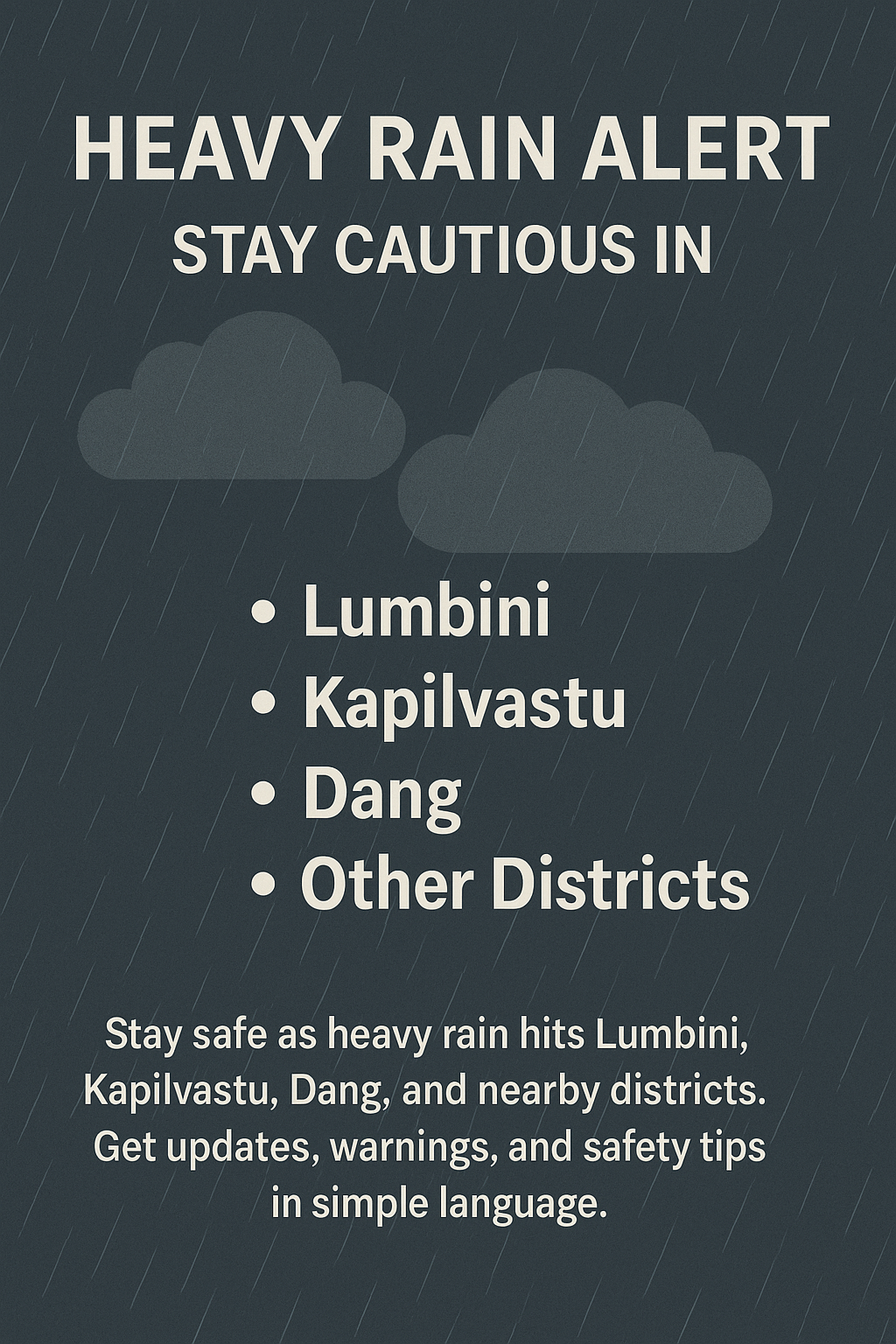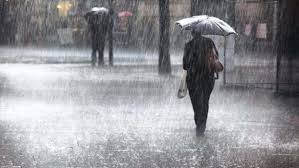It’s raining a lot in Nepal today. The weather is getting very bad in Lumbini, Kapilvastu, Dang, and many other places. The sky is dark, clouds are thick, and water is falling from the sky non-stop. The Department of Hydrology and Meteorology (DHM) has given a heavy rain alert in Nepal. People must be very careful.
In this article, you will learn:
-
Where the rain is falling heavily
-
Why it is dangerous
-
What you should do to stay safe
-
Updates about Lumbini, Kapilvastu, Dang, and other districts
-
What the government has said
Let’s begin and stay safe together.

What is the Heavy Rain Alert About?
The heavy rain alert Nepal warning means that a lot of rain is coming. The sky will be full of clouds, and rain may not stop for many hours or even days. When this happens, the water can flood roads, homes, schools, and farms.
The DHM of Nepal has warned that from June 23 to June 25, many parts of the country, especially in the Lumbini Province, will have very heavy rainfall.
According to DHM's forecast, "Rainfall will be intense with thunder and strong winds in several areas, especially Lumbini and Koshi provinces."
Areas Most Affected by the Heavy Rain
The districts facing the most danger from rain are:
-
Lumbini (including Butwal, Bhairahawa)
-
Kapilvastu
-
Dang
-
Nawalparasi (East)
-
Parts of Koshi Province
The Kapilvastu weather warning is very serious because the roads there get blocked quickly during rain. Similarly, the Dang district rainfall update shows that the rivers are rising and may overflow.
Risk of Flooding and Landslides
Because of this heavy rain, there is a flood risk in Nepal today. Rivers in Lumbini and Koshi provinces may go above the danger line. Fields and houses near rivers can be filled with water.
Also, in hilly areas of Dang and nearby districts, there is a chance of landslides. Stones, mud, and trees may fall from the hills, making roads unsafe.
As Meteorologist Raju Thapa said, “People living near rivers and hills should move to safer places and not stay in risky homes.”
What Has the Government Said?
The government has told all local bodies and people to be ready. The Home Ministry and DHM are working together to send alerts.
According to a statement from the Home Ministry, “All rescue teams are on standby. If people are in danger, they should call local offices or police immediately.”
Schools may remain closed in some districts depending on the weather conditions. Farmers have been advised to protect their crops and animals.
Nepal Weather Alert 2025: What to Know Now
The Nepal weather alert 2025 is not just for one day. Experts say this is part of the monsoon warning in Nepal for the year. This monsoon season is expected to bring more rain than last year.
Districts affected by rain in Nepal will keep changing as the rain moves from west to east. That is why people in Koshi Province should also be ready, as the rainfall warning for Koshi Province is also active.
Senior official Binita KC warned, “If the rain continues, more districts will be added to the danger list. Stay connected to updates.”
Safety Tips During Heavy Rain in Nepal
Let’s stay safe! Here are easy safety tips during heavy rain in Nepal that anyone—even children—can understand:
-
Do not walk or play in floodwater.
-
Stay inside your home if it’s safe. Don’t go outside unless you have to.
-
Turn off electrical items if water enters your house.
-
Keep food and drinking water safe in covered containers.
-
Use mobile phones or radios to get updates from the government.
-
Help small children and old people to stay safe.
-
Move to a higher place if your area gets flooded.
-
Do not drive or ride motorbikes on flooded roads.
Conclusion
To sum up, the weather in Nepal, especially in Lumbini, Kapilvastu, Dang, and nearby places, is very dangerous due to heavy rainfall. There is a real chance of floods, blocked roads, and landslides.
The heavy rain alert Nepal has been issued by the government, and we must all listen and follow safety instructions. You, your family, and friends should stay updated and stay safe.
Keep checking trusted weather websites like DHM.gov.np, your local news, or government notices for the latest information.









